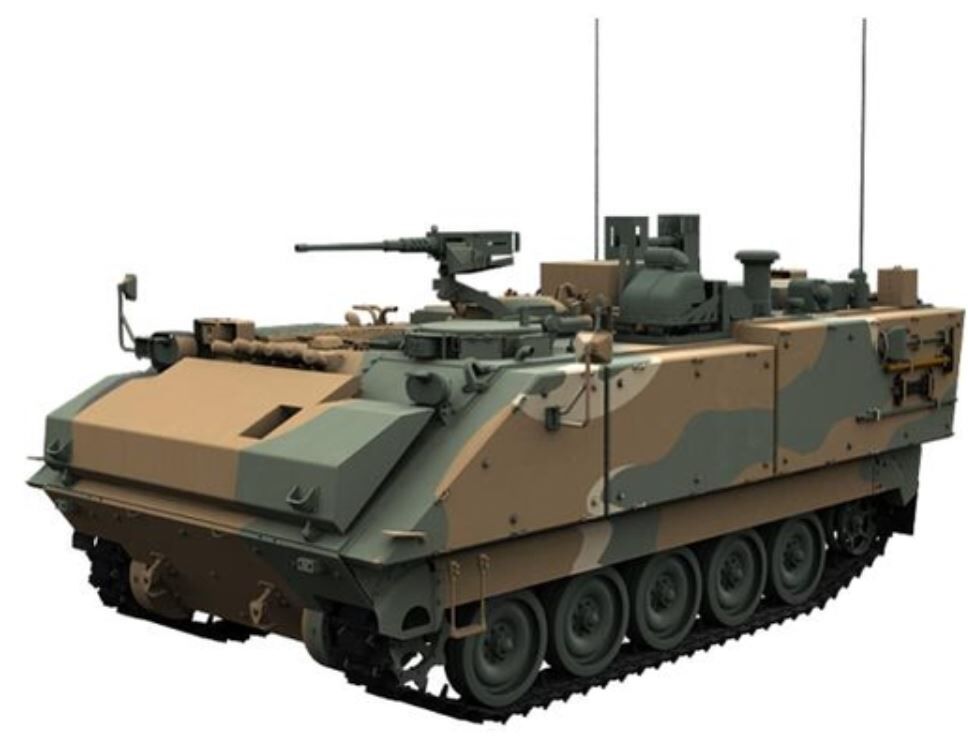
A computer-generated depiction of South Korea's new CBRN-resistant armoured personnel carrier. (Defense Acquisition Program Administration (DAPA))
South Korea’s Ministry of National Defense has completed fielding of an upgraded version of its K216 Nuclear, Biological, and Chemical Reconnaissance Vehicle (NBCRV) according to a press release issued by the ministry’s Defense Acquisition Program Administration (DAPA) on 22 December 2021.
The upgraded vehicle will be able to monitor airborne chemical agents from a distance and detect the sources of these agents via specialised equipment, DAPA said. The vehicle is also equipped with a suite of communications equipment that enables better co-ordination with the main combat units of the army, the agency added.
According to the agency, the upgrade was developed as part of the wider Chemical, Biological, Radiological, and Nuclear (CBRN) Reconnaissance Vehicle II programme, which aims to improve the Republic of Korea Army’s (RoKA’s) CBRN-readiness in both wartime and peacetime. Instead of developing an entirely new platform, the programme focused on updating older platforms that had entered service with the RoKA in order to reduce costs.
While DAPA did not disclose further details of the upgraded vehicle’s capabilities, Janes previously reported during the DX Korea land forces exhibition held in September 2018 that the upgraded vehicle was fitted with a new NBC detection suite capable of detecting chemical agents out to a distance of 5 km and a battlefield management system (BMS) to enable it to share its information via the RoKA’s command, control, communications, computers, intelligence, surveillance, and reconnaissance (C4ISR) network. It is understood that this upgraded version began to be delivered to the RoKA in 2017, having undergone development between 2011 and 2015.
Looking to read the full article?
Gain unlimited access to Janes news and more...





